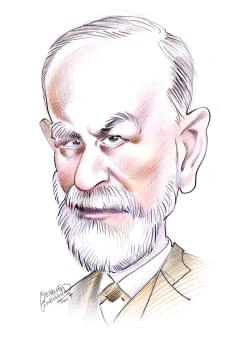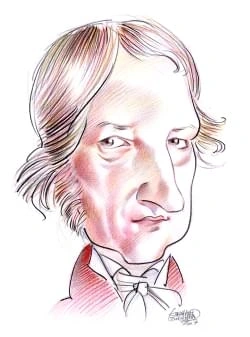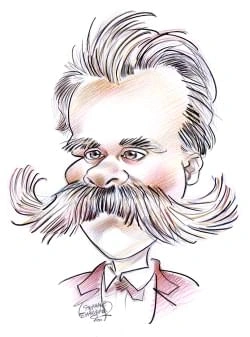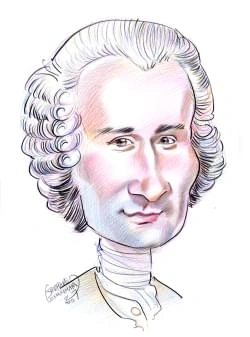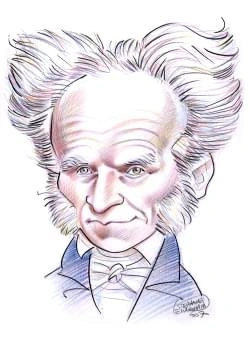1619 résultats pour "aboutissement"
-
Brazil - country.
occasional droughts. Brazil contains a wealth of mineral and plant resources that have not yet been fully explored. It possesses some of the world’s largest deposits of iron ore and containsrich deposits of many other minerals, including gold and copper. Brazil’s fossil fuel resources are modest, but this limitation is offset by the considerable hydroelectricpotential of the nation’s many rivers. Although Brazil is an important producer of tropical crops, areas of highly fertile land are limited...
-
Alberta - Geography.
C Climate Except for the mountain areas, summers throughout the province are quite warm. Winters are long and extremely cold. In July, average daily temperatures range fromabout 16°C (about 60°F) along the northern boundary to about 21°C (about 70°F) in the south. In the extreme southeastern section of the province, temperatures of43°C (110°F) have been recorded. In January, average daily temperatures range from about -14°C (about 6°F) at Grande Prairie to about -9°C (about 16°F) atCalgary. Tem...
-
Alberta - Canadian History.
C Climate Except for the mountain areas, summers throughout the province are quite warm. Winters are long and extremely cold. In July, average daily temperatures range fromabout 16°C (about 60°F) along the northern boundary to about 21°C (about 70°F) in the south. In the extreme southeastern section of the province, temperatures of43°C (110°F) have been recorded. In January, average daily temperatures range from about -14°C (about 6°F) at Grande Prairie to about -9°C (about 16°F) atCalgary. Tem...
-
Mississippi - geography.
The climate of Mississippi is characterized by long, hot, and humid summers and generally mild winters. The higher lands in the northeast are usually cooler than otherareas of the state. D1 Temperature Average January temperatures range from about 6° C (about 42° F) in northeastern Mississippi to about 12° C (about 54° F) along the Gulf Coast. No part of the stateis entirely free from freezing temperatures, but prolonged periods of extreme cold rarely occur. Temperatures more than 15° C (30° F)...
-
Mississippi - USA History.
The climate of Mississippi is characterized by long, hot, and humid summers and generally mild winters. The higher lands in the northeast are usually cooler than otherareas of the state. D1 Temperature Average January temperatures range from about 6° C (about 42° F) in northeastern Mississippi to about 12° C (about 54° F) along the Gulf Coast. No part of the stateis entirely free from freezing temperatures, but prolonged periods of extreme cold rarely occur. Temperatures more than 15° C (30° F)...
-
Public Finance.
obtained by borrowing instead of taxation—can be helpful for the economy. For example, when unemployment is high, the government can undertake projects that useworkers who would otherwise be idle. The economy will then expand because more money is being pumped into it. However, deficit spending also can harm theeconomy. When unemployment is low, a deficit may result in rising prices, or inflation. The additional government spending creates more competition for scarce workersand resources and thi...
-
Colombia - country.
In Bogotá the average high temperature in January is 20°C (68°F), and in July the average high is 19°C (65°F). The highs for the same months in Barranquilla are 32°C(89°F) and 33°C (91°F). Throughout the year, three-month periods of rain and dry weather alternate. Along the Pacific coast precipitation is heavy. At Bogotá the annual rainfall averages about1,060 mm (about 42 in), and in Barranquilla it averages about 800 mm (about 32 in). Dry weather prevails on the slopes of the Cordillera Orient...
-
Massachusetts - geography.
mi). Other large artificial lakes include Wachusett Reservoir, East Brimfield Reservoir, and Cobble Mountain Reservoir. Assawompsett Pond, covering about 10 sq km(about 4 sq mi), is the largest natural lake. North Watuppa Pond and Long Pond are other large natural lakes. Lake Chaubunagungamaug, near Webster, is usuallycalled Webster Lake, because the Algonquian name is difficult to pronounce and spell. The full version of the Native American name is said to be the longest place-namein North Amer...
-
-
Azerbaijan - country.
second most important industrial center after Baku. A Ethnic Groups Azerbaijan, including the autonomous exclave of Naxçivan, is populated mostly by ethnic Azerbaijanis, who are also known as Azeris. The ethnic composition of thecountry changed due to a civil war between the government of Azerbaijan and Armenian secessionists in the Nagorno-Karabakh enclave. Beginning in 1988, when thepeople of Nagorno-Karabakh unilaterally decided to secede from Azerbaijan, nearly the entire Azerbaijani popula...
-
Nova Scotia - Geography.
summer. Nova Scotia receives an average of more than 1,140 mm (45 in) of rain annually, with the Atlantic shore receiving 1,400 mm (55 in) or more. Most of the provincereceives about 1,900 mm (about 70 in) of snow, and considerable winter precipitation comes in the form of rain or ice storms. The average temperature in January, thecoldest month, is generally about -4°C (about 25°F) near the coast and somewhat colder toward the interior. The average temperature in July, the hottest month, isabout...
-
Nova Scotia - Canadian History.
summer. Nova Scotia receives an average of more than 1,140 mm (45 in) of rain annually, with the Atlantic shore receiving 1,400 mm (55 in) or more. Most of the provincereceives about 1,900 mm (about 70 in) of snow, and considerable winter precipitation comes in the form of rain or ice storms. The average temperature in January, thecoldest month, is generally about -4°C (about 25°F) near the coast and somewhat colder toward the interior. The average temperature in July, the hottest month, isabout...
-
Middle East - geography.
years.Spectrum Colour Library Apart from the Nile River, which provides much of the water supply and irrigation systems of Egypt, and the Tigris and Euphrates rivers, which supply Iraq, Syria, andTurkey, there are no major rivers or navigable waterways. The Sea of Galilee (Lake Tiberias) in northern Israel, fed from the north by the shallow, unnavigable JordanRiver, provides Israel’s main source of fresh water. With such a limited water supply, access to water for drinking, irrigation, and hydro...
-
Ancient Greece.
The first culture of Aegean civilization on the Greek mainland is named Mycenaean for the palace at Mycenae on the Pelopónnisos. Scholars call the Mycenaeans the“earliest Greeks” because they are the first people known to have spoken Greek. Mycenaean culture developed later than Minoan. The ancestors of the Mycenaean people wandered onto the mainland from the north and the east from about 4000 to2000 BC, mixing with the people already there, and by about 1400 BC the Mycenaeans had become very...
-
Ancient Greece .
The first culture of Aegean civilization on the Greek mainland is named Mycenaean for the palace at Mycenae on the Pelopónnisos. Scholars call the Mycenaeans the“earliest Greeks” because they are the first people known to have spoken Greek. Mycenaean culture developed later than Minoan. The ancestors of the Mycenaean people wandered onto the mainland from the north and the east from about 4000 to2000 BC, mixing with the people already there, and by about 1400 BC the Mycenaeans had become very...
-
Ancient Greece - USA History.
The first culture of Aegean civilization on the Greek mainland is named Mycenaean for the palace at Mycenae on the Pelopónnisos. Scholars call the Mycenaeans the“earliest Greeks” because they are the first people known to have spoken Greek. Mycenaean culture developed later than Minoan. The ancestors of the Mycenaean people wandered onto the mainland from the north and the east from about 4000 to2000 BC, mixing with the people already there, and by about 1400 BC the Mycenaeans had become very...
-
Ocean and Oceanography.
of sediment. When studied in sedimentary core samples, which can represent many millions of years of deposits, they provide a detailed and continuous history of theearth’s environmental changes. The record is particularly informative for the most recent 2 million to 5 million years, during which major fluctuations in global climatehave occurred. Successive ice ages can be traced by the relative scarcity or abundance of the shells of warm-water and cold-water diatoms in various layers of asedimen...
-
-
Ocean and Oceanography - Geography.
of sediment. When studied in sedimentary core samples, which can represent many millions of years of deposits, they provide a detailed and continuous history of theearth’s environmental changes. The record is particularly informative for the most recent 2 million to 5 million years, during which major fluctuations in global climatehave occurred. Successive ice ages can be traced by the relative scarcity or abundance of the shells of warm-water and cold-water diatoms in various layers of asedimen...
-
Hippopotamus - biology.
hippo backs up to its droppings and uses its tail as a paddle, flicking the dung through the air. This creates a pile that can become several meters wide over time. Male river hippos start to establish territories when they are in their early 20s, and they may eventually control more than 250 m (820 ft) of the water's edge.Subordinate males come and go freely, but a rival male will spark a confrontation if it tries to intrude. The territory owner and intruder face each other open-mouthedand, if...
-
Christopher Columbus
I
INTRODUCTION
Christopher Columbus (1451-1506), Italian-born Spanish navigator who sailed west across the Atlantic Ocean in search of a route to Asia but achieved fame by making
landfall in the Americas instead.
explorers, adventurers, entrepreneurs, merchants, and any others who saw their fortunes tied to the trade winds and ocean currents. Columbus’s brother Bartholomewworked in Lisbon as a mapmaker, and for a time the brothers worked together as draftsmen and book collectors. Later that year, Columbus set sail on a convoy loadedwith goods to be sold in northern Atlantic ports. In 1478 or 1479 Columbus met and married Felipa Perestrello e Moniz, the daughter of a respected, though relatively poor, nob...
-
Christopher Columbus.
explorers, adventurers, entrepreneurs, merchants, and any others who saw their fortunes tied to the trade winds and ocean currents. Columbus’s brother Bartholomewworked in Lisbon as a mapmaker, and for a time the brothers worked together as draftsmen and book collectors. Later that year, Columbus set sail on a convoy loadedwith goods to be sold in northern Atlantic ports. In 1478 or 1479 Columbus met and married Felipa Perestrello e Moniz, the daughter of a respected, though relatively poor, nob...
-
Christopher Columbus.
explorers, adventurers, entrepreneurs, merchants, and any others who saw their fortunes tied to the trade winds and ocean currents. Columbus’s brother Bartholomewworked in Lisbon as a mapmaker, and for a time the brothers worked together as draftsmen and book collectors. Later that year, Columbus set sail on a convoy loadedwith goods to be sold in northern Atlantic ports. In 1478 or 1479 Columbus met and married Felipa Perestrello e Moniz, the daughter of a respected, though relatively poor, nob...
-
Christopher Columbus - explorer.
explorers, adventurers, entrepreneurs, merchants, and any others who saw their fortunes tied to the trade winds and ocean currents. Columbus’s brother Bartholomewworked in Lisbon as a mapmaker, and for a time the brothers worked together as draftsmen and book collectors. Later that year, Columbus set sail on a convoy loadedwith goods to be sold in northern Atlantic ports. In 1478 or 1479 Columbus met and married Felipa Perestrello e Moniz, the daughter of a respected, though relatively poor, nob...
-
Missouri - geography.
Saint Francois Mountains, at the eastern end of the crest of the dome. Only in these mountains have the sedimentary rocks been sufficiently eroded away so that theunderlying igneous rocks are exposed. They form the rounded, knoblike peaks of an old mountain range. The peaks project, in isolation or in clusters, between 230 and300 m (750 and 1,000 ft) above the surrounding sedimentary basins. One of these knobs, Taum Sauk Mountain, reaches 540 m (1,772 ft) above sea level and is thehighest point...
-
Missouri - USA History.
Saint Francois Mountains, at the eastern end of the crest of the dome. Only in these mountains have the sedimentary rocks been sufficiently eroded away so that theunderlying igneous rocks are exposed. They form the rounded, knoblike peaks of an old mountain range. The peaks project, in isolation or in clusters, between 230 and300 m (750 and 1,000 ft) above the surrounding sedimentary basins. One of these knobs, Taum Sauk Mountain, reaches 540 m (1,772 ft) above sea level and is thehighest point...
-
-
Mental Illness.
note that under this definition, political dissidents could be considered mentally ill for refusing to accept the dictates of their government. VI PREVALENCE Mental illness affects people of all ages, races, cultures, and socioeconomic classes. The prevalence of mental illness refers to how many people experience a mentalillness during a specified time period. A United States and Worldwide In the United States, researchers estimate that about 24 percent of people 18 or older, or about 44 mill...
-
Yangtze - Geography.
A Agriculture and Industry Today about 400 million people, or about one-third of the population of China, live in the Yangtze Basin. Many are engaged in agriculture. The basin contributes nearlyhalf of China’s crop production, although only one-quarter of the basin is arable. The most fertile areas for farming are the Sichuan Basin, the plains between theYangtze and its tributary the Han, and the plains of the lower basin. In all about 40 percent of the cereals, more than 30 percent of the cott...
-
Canada.
Six general landform regions are distinguishable in Canada: the Appalachian Region, the Great Lakes and St. Lawrence Lowlands, the Canadian Shield, the Great Plains,the Canadian Cordillera, and the Canadian Arctic Archipelago. B1 Appalachian Region and Great Lakes and St. Lawrence Lowlands Eastern Canada consists of the Appalachian Region and the Great Lakes and St. Lawrence Lowlands. The Appalachian Region embraces Newfoundland Island, NovaScotia, New Brunswick, Prince Edward Island, and the G...
-
Canada - country.
Six general landform regions are distinguishable in Canada: the Appalachian Region, the Great Lakes and St. Lawrence Lowlands, the Canadian Shield, the Great Plains,the Canadian Cordillera, and the Canadian Arctic Archipelago. B1 Appalachian Region and Great Lakes and St. Lawrence Lowlands Eastern Canada consists of the Appalachian Region and the Great Lakes and St. Lawrence Lowlands. The Appalachian Region embraces Newfoundland Island, NovaScotia, New Brunswick, Prince Edward Island, and the G...
-
Canada - Canadian History.
Six general landform regions are distinguishable in Canada: the Appalachian Region, the Great Lakes and St. Lawrence Lowlands, the Canadian Shield, the Great Plains,the Canadian Cordillera, and the Canadian Arctic Archipelago. B1 Appalachian Region and Great Lakes and St. Lawrence Lowlands Eastern Canada consists of the Appalachian Region and the Great Lakes and St. Lawrence Lowlands. The Appalachian Region embraces Newfoundland Island, NovaScotia, New Brunswick, Prince Edward Island, and the G...
-
Vertebrate - biology.
E Reptiles Compared to amphibians, reptiles are much more fully adapted to life on land. They have scaly, waterproof skin, and they either give birth to live young or lay eggs withwaterproof shells. There are about 7,000 species alive today, including snakes, alligators, and turtles. During the age of the dinosaurs, about 230 million to 65 millionyears ago, reptiles outnumbered all other land vertebrates put together. F Birds Birds evolved from flightless reptiles but underwent some major chan...
-
Louisiana - geography.
lakes are on the Red River and its tributaries. In addition, small oxbow lakes are numerous in the Mississippi Alluvial Plain. Oxbow lakes are formed when a river cutsthrough the neck of one of its loops, or meanders, thus establishing a shorter course and leaving the former loop as a lake separate from the river. Louisiana also hassome artificially created reservoirs. C Coastline Louisiana’s long and irregular coastline extends along the Gulf of Mexico from the Pearl River on the east to the S...
-
Louisiana - USA History.
lakes are on the Red River and its tributaries. In addition, small oxbow lakes are numerous in the Mississippi Alluvial Plain. Oxbow lakes are formed when a river cutsthrough the neck of one of its loops, or meanders, thus establishing a shorter course and leaving the former loop as a lake separate from the river. Louisiana also hassome artificially created reservoirs. C Coastline Louisiana’s long and irregular coastline extends along the Gulf of Mexico from the Pearl River on the east to the S...
-
-
Concepts
suggested that concept possession need not consist in knowing a definition, but in appreciating the role of a concept in thought and practice. Moreover, he claimed, a concept need not apply to things by virtue of some closed set of features captured by a definition, but rather by virtue of ‘family resemblances' among the things, a suggestion that has given rise in psychology to ‘prototype' theories of concepts. Most traditional approaches to possession conditions have been concerned with t...
-
India - country.
delta in the north, are intensely farmed. B Rivers and Lakes The rivers of India can be divided into three groups: the great Himalayan rivers of the north, the westward-flowing rivers of central India, and the eastward-flowingrivers of the Deccan Plateau and the rest of peninsular India. Only small portions of India’s rivers are navigable because of silting and the wide seasonal variation inwater flow (due to the monsoon climate). Water transport is thus of little importance in India. Barrages,...
-
Archaeology.
Prehistoric archaeology is practiced by archaeologists known as prehistorians and deals with ancient cultures that did not have writing of any kind. Prehistory, a term coined by 19th-century French scholars, covers past human life from its origins up to the advent of written records. History—that is, the human past documented insome form of writing—began 5000 years ago in parts of southwestern Asia and as recently as the late 19th century AD in central Africa and parts of the Americas. Becaus...
-
Digestive System.
The stomach, located in the upper abdomen just below the diaphragm, is a saclike structure with strong, muscular walls. The stomach can expand significantly to storeall the food from a meal for both mechanical and chemical processing. The stomach contracts about three times per minute, churning the food and mixing it with gastricjuice. This fluid, secreted by thousands of gastric glands in the lining of the stomach, consists of water, hydrochloric acid, an enzyme called pepsin, and mucin (the...
-
Native Americans of North America.
addition to smallpox and measles, explorers and colonists brought a host of other diseases: bubonic plague, cholera, typhoid fever, scarlet fever, pleurisy, mumps,diphtheria, pneumonia, whooping cough, malaria, yellow fever, and various sexually transmitted infections. Despite the undisputed devastation wreaked on Indian populations after European contact, native populations showed enormous regional variability in their response todisease exposure. Some peoples survived and, in some cases, even...
-
Native Americans of North America - Canadian History.
addition to smallpox and measles, explorers and colonists brought a host of other diseases: bubonic plague, cholera, typhoid fever, scarlet fever, pleurisy, mumps,diphtheria, pneumonia, whooping cough, malaria, yellow fever, and various sexually transmitted infections. Despite the undisputed devastation wreaked on Indian populations after European contact, native populations showed enormous regional variability in their response todisease exposure. Some peoples survived and, in some cases, even...
-
New Mexico - geography.
New Mexico’s major river is the Río Grande, originating in southern Colorado, and flowing southward for 760 km (470 mi) through the state. Between the San LuisValley and Española Valley the river flows in a deep canyon known as the Río Grande Gorge; then, below White Rock Canyon, it flows through several valleys containingagricultural land. Most of the water of the Río Grande is used to irrigate these valleys. The Río Grande’s waterflow in New Mexico is extremely low. One of the major tributarie...
-
New Mexico - USA History.
New Mexico’s major river is the Río Grande, originating in southern Colorado, and flowing southward for 760 km (470 mi) through the state. Between the San LuisValley and Española Valley the river flows in a deep canyon known as the Río Grande Gorge; then, below White Rock Canyon, it flows through several valleys containingagricultural land. Most of the water of the Río Grande is used to irrigate these valleys. The Río Grande’s waterflow in New Mexico is extremely low. One of the major tributarie...
-
-
Anthropology.
humans, such as tools, pottery, and buildings) and human fossils (preserved bones). They also examine past environments to understand how natural forces, such as climate and available food, shaped the development of human culture. Some archaeologists study cultures that existed before the development of writing, a time knownas prehistory . The archaeological study of periods of human evolution up to the first development of agriculture, about 10,000 years ago, is also called paleoanthropology....
-
Skiing.
Safety is very important to all skiers, and all Alpine resorts have a ski patrol. The ski patrol’s responsibility is to take care of injured skiers, to mark hazardous spots ontrails, to make sure that trails are in good condition before opening them, and, at times, to act as traffic police in congested areas. Skiers are also responsible for takingtheir own safety into consideration, as well as that of others. Anyone who participates in the sport should be aware of the Skier’s Responsibility Code...
-
Haiti - country.
Haitian Creole and French are the official languages of Haiti. Haitian Creole, a French-based Creole with influences from West African languages, was made an officiallanguage under the 1987 constitution. It is the mother tongue for nearly the entire population of Haiti and the language of instruction in schools. French is spokenmainly as a second language by a small section of the population. B Religion About 80 percent of Haiti’s people are nominal Roman Catholics, many of them combining an Af...
-
Newfoundland and Labrador - Geography.
Precipitation averages about 1,120 mm (about 44 in) yearly in Newfoundland. In Labrador precipitation varies from about 1,020 mm (about 40 in) in the southeast toabout 510 mm (about 20 in) in the extreme north. Heavy winter snowfalls are common, especially in Newfoundland. D Plant Life About one-third of Newfoundland is forested, and most of the rest of the island is made up of barren areas of reindeer moss and lichens. The forests consist almostentirely of conifers. The most important species...
-
Newfoundland and Labrador - Canadian History.
Precipitation averages about 1,120 mm (about 44 in) yearly in Newfoundland. In Labrador precipitation varies from about 1,020 mm (about 40 in) in the southeast toabout 510 mm (about 20 in) in the extreme north. Heavy winter snowfalls are common, especially in Newfoundland. D Plant Life About one-third of Newfoundland is forested, and most of the rest of the island is made up of barren areas of reindeer moss and lichens. The forests consist almostentirely of conifers. The most important species...
-
Connecticut - geography.
The state’s shoreline, when all the bays and inlets are taken into account, has a total length of 995 km (618 mi). The coastline is deeply indented by long estuaries androcky inlets, and there are many sandy beaches and stretches of tidal marsh. There are several good harbors along the coast, the most important of which is at NewHaven. A few small islands lie offshore in Long Island Sound. D Climate Connecticut has long, hot summers and cold winters. The climate does not vary greatly from place...
-
Connecticut - USA History.
The state’s shoreline, when all the bays and inlets are taken into account, has a total length of 995 km (618 mi). The coastline is deeply indented by long estuaries androcky inlets, and there are many sandy beaches and stretches of tidal marsh. There are several good harbors along the coast, the most important of which is at NewHaven. A few small islands lie offshore in Long Island Sound. D Climate Connecticut has long, hot summers and cold winters. The climate does not vary greatly from place...
-
Neptune (planet) - astronomy.
The gaseous atmosphere of Neptune contains hydrogen, helium, and about 3 percent methane. It extends about 5,000 km (about 3,000 mi) above the planet’s ocean.Light reflected from Neptune’s deep atmosphere is blue, because the atmospheric methane absorbs red and orange light but scatters blue light. In 1998 astronomersalso identified molecules of methyl in Neptune’s atmosphere. Methyl molecules each contain one carbon atom and three hydrogen atoms. Methyl molecules are knownas hydrocarbon radical...
-
-
Middle East - Geography.
though overall they have improved considerably since the 1970s. This variation reflects the different levels of wealth and development in countries of the Middle East. Inthe highly developed country of Israel the infant mortality rate was 8 deaths per 1000 live births in 1997. By comparison, the rate per 1000 live births was 71 in less-developed Egypt and 75 in Yemen. A Ethnic Groups and Languages Arabs make up the majority of the people of the Middle East, accounting for almost the entire popu...
-
Michigan - geography.
The interior location of Michigan in the northern part of North America results in a continental climate, characterized by four definite seasons with moist, mild to hotsummers and snowy, cold winters. Winds off of Lakes Michigan and Superior in winter create heavy snow accumulations in nearby areas. The tempering effects of LakeMichigan account for the presence of the state’s famous fruit-growing belt along the lake’s shore. Since the water is colder than the land in spring, the westerly windspa...
}})
